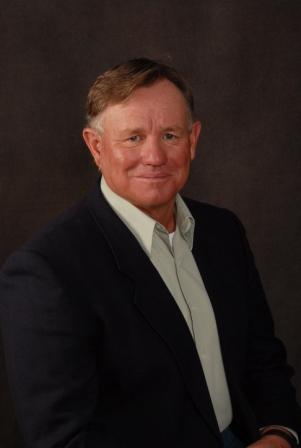
Thoughts on the Wild Horse Program: Dr. Boyd Spratling
By Larry Hyslop

Dr. Boyd Spratling
The BLM’s Wild Horse and Burro Program is controversial to say the least, generating strong emotions and differing opinions. This is the first in a series of columns offering the thoughts and opinions of knowledgeable people concerning this program.
Dr. Boyd Spratling is a large animal veterinarian with an office in Starr Valley, Nevada. He has served on the BLM’s advisory board for the Wild Horse and Burro Program during the past six years, where he represents veterinary medicine. He is very knowledgeable concerning wild horses and holds strong opinions on their management.
He describes himself as pro-wild horse, concerned with both healthy wild horses and healthy rangelands . Anyone concerned with their welfare has to be concerned about their management.
“We are at ground zero here in Nevada.” He feels the wild horse program is unsustainable as it stands. We cannot warehouse captive wild horses indefinitely, and we cannot walk away from managing their herds on our federal lands. Half of the country’s wild horses live in Nevada.
Dr. Spratling worries about the current push by wild horse advocacy groups to force the BLM to simply stop managing wild horses, on the premise that wild horse populations will stabilize by themselves, as their reproduction slows naturally. Wild horse advocates want all livestock removed from federal lands to make room for more wild horses. Boyd has even heard talk of wanting to release captive wild horses now held in long term facilities.
“I’m not willing to hand over our entire resource for one species,” he said. Boyd says non-management would be a catastrophe, with horse populations building until they strip the landscape of forage, resulting in the starvation of horses.
“I am concerned that the BLM is giving up,” he says. The agency is being attacked from all sides. The warehousing of 38,000+ captive wild horses is consuming most of the program’s budget, leaving little for management of wild herds and nothing at all for range improvements. The BLM is trying to save money by gathering fewer excess wild horses and managing populations through reproductive strategies.
Boyd says the horse contraceptive now in use is inadequate. When injected into mares, it keeps them from producing foals for, at most, two reproductive cycles. Following treatment, decidedly fewer mares will foal, but after the product wears off, almost every mare drops a foal. There is evidence showing a herd thus treated may produce more foals during a 10 year period than one not treated. What is needed is a contraceptive capable of stopping reproduction for at least five years or even permanently.
One problem is that the Environmental Protection Agency controls such reproductive products, creating road blocks and slowing the process to develop such a contraceptive.
When asked about Madeline Pickens’ Mustang Monument eco-sanctuary, Boyd says he has no problem with it, as long as she owns the horses on her private and public grazing allotment, and as long as she goes through the same processes, pays the same grazing fees and abides by the same regulations as other livestock owners. “She needs to play by the same rules as everyone else,” he said.
When asked if he is optimistic or pessimistic regarding the program, he replied that he is frustrated and concerned about its future amid increasing conflict. The program needs to change, and he worries that emotional public pressures will force the BLM to follow policies that neither benefit the wild horse or the resource.
Elko Daily Free Press, “Nature Notes”, 1/26/2012
© Gray Jay Press, Elko, NV
Return to Elko Nature Notes